Foreword / YouTube Video Review
The review on this website is a brief overview and summary of the objective performance of this speaker. It is not intended to be a deep dive. Moreso, this is information for those who prefer “just the facts” and prefer to have the data without the filler.
Note: Coming Soon
For a primer on what the data means, please watch my series of videos where I provide in-depth discussion and examples of how to read the graphics presented hereon.
Information and Photos
The Bose SoundLink Revolve and Revolve+ are Bluetooth speakers. The design of these speakers are intended to provide 360° sound throughout the room and does so using a “fullrange” drive-unit with a waveguide paired with a set of passive radiators to provide the lower frequency content. See below photo for illustration.
Mechanically, the differences are in size and weight. The standard SoundLink Revolve is smaller and weighs about 0.50 lbs. less than the SoundLink Revolve+. The former has 12 hours battery life while the Revolve+ has 16 hours battery life.
Current MSRP for the Revolve is $180 USD and $250 USD for the Revolve+.

CTA-2034 (SPINORAMA) and Accompanying Data
All data collected using Klippel’s Near-Field Scanner. The Near-Field-Scanner 3D (NFS) offers a fully automated acoustic measurement of direct sound radiated from the source under test. The radiated sound is determined in any desired distance and angle in the 3D space outside the scanning surface. Directivity, sound power, SPL response and many more key figures are obtained for any kind of loudspeaker and audio system in near field applications (e.g. studio monitors, mobile devices) as well as far field applications (e.g. professional audio systems). Utilizing a minimum of measurement points, a comprehensive data set is generated containing the loudspeaker’s high resolution, free field sound radiation in the near and far field. For a detailed explanation of how the NFS works and the science behind it, please watch the below discussion with designer Christian Bellmann:
Given that this is a device that is less about “ideal listening conditions” and more about “convenience”, I am less interested in the absolute accuracy of the frequency response and more interested in the radiation pattern and the maximum SPL limits. In other words, most will be listening to this while moving about the home or as background music but I can’t imagine many attempting to use a SoundLink Revolve for “critical listening”. The goal of this review is to answer some basic questions: 1) What is the difference between the two versions, 2) what is the sound radiation characteristic and 3) which one gets louder.
With the above said, the reference plane in this test is at the waveguide level. Just above the bottom of the speaker. Volume set to max and signal was applied via the Aux Input. The speaker was measured fresh out of the box with no additional settings enabled (if they even exist). So there was nothing to disable in terms of “DSP”.
I modified the NFS to use a pole, placing the speaker on top rather than directly on top of the NFS’ platform. This was done to make sure there was no artifacts - comb filtering - from the stand back to the microphone as this is intended to provide anechoic data, as previously discussed. An example of this can be seen below from my Apple HomePod Mini test.
Measurements are provided in a format in accordance with the Standard Method of Measurement for In-Home Loudspeakers (ANSI/CTA-2034-A R-2020). For more information, please see this link.
Since this review is intended to be a comparison, I will provide a pair of results for each section and have removed some (redundant) graphics out of my typical review format to shorten the review. Bose SoundLink Revolve first. Followed by the SoundLink Revolve+. This should make it easier to compare as opposed to splitting the data over two separate reviews.
CTA-2034 / SPINORAMA:
The On-axis Frequency Response (0°) is the universal starting point and in many situations, it is a fair representation of the first sound to arrive at a listener’s ears.
The Listening Window is a spatial average of the nine amplitude responses in the ±10º vertical and ±30º horizontal angular range. This encompasses those listeners who sit within a typical home theater audience, as well as those who disregard the normal rules when listening alone.
The Early Reflections curve is an estimate of all single-bounce, first-reflections, in a typical listening room.
Sound Power represents all the sounds arriving at the listening position after any number of reflections from any direction. It is the weighted rms average of all 70 measurements, with individual measurements weighted according to the portion of the spherical surface that they represent.
Sound Power Directivity Index (SPDI): In this standard the SPDI is defined as the difference between the listening window curve and the sound power curve.
Early Reflections Directivity Index (EPDI): is defined as the difference between the listening window curve and the early reflections curve. In small rooms, early reflections figure prominently in what is measured and heard in the room so this curve may provide insights into potential sound quality.
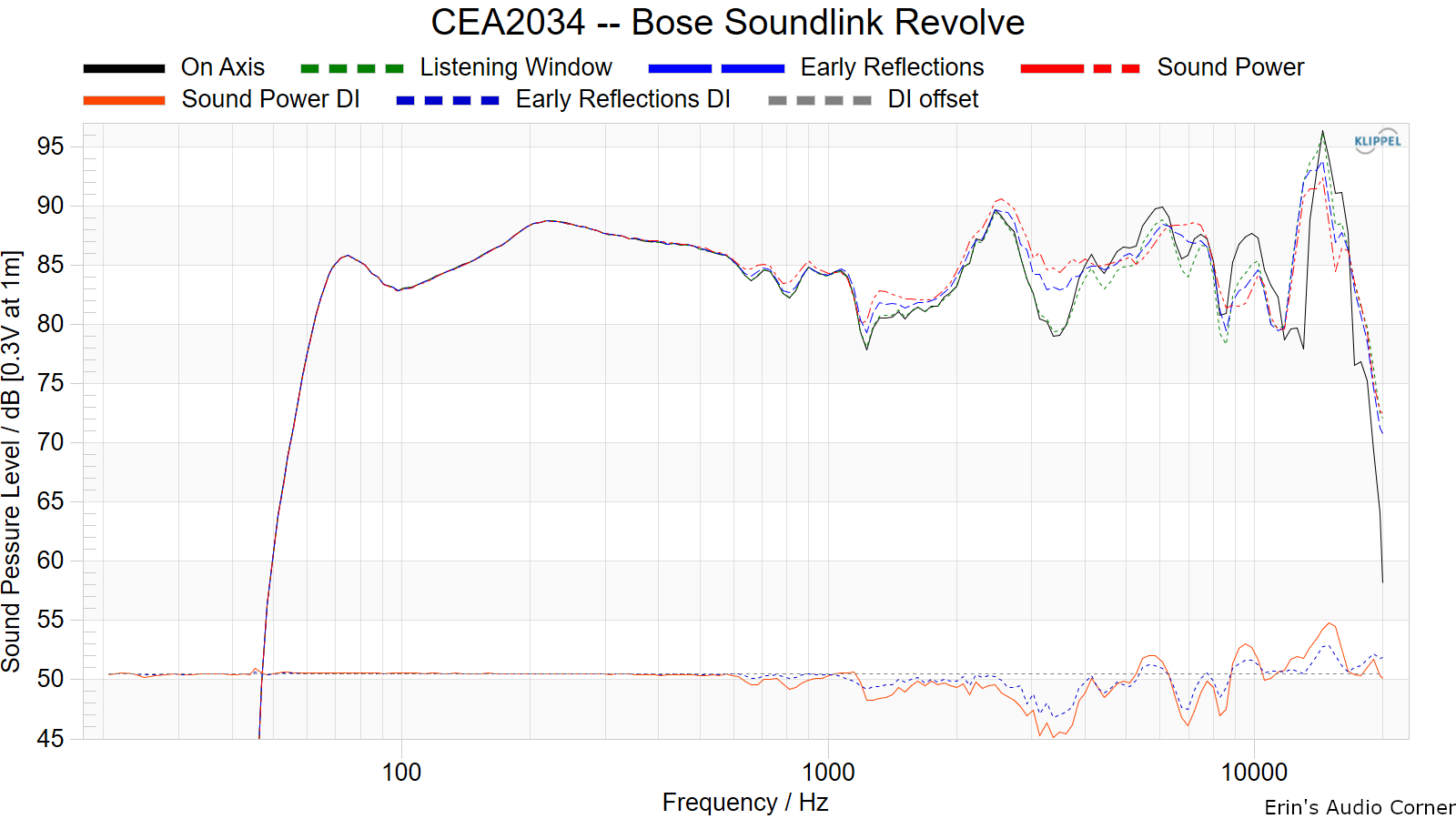
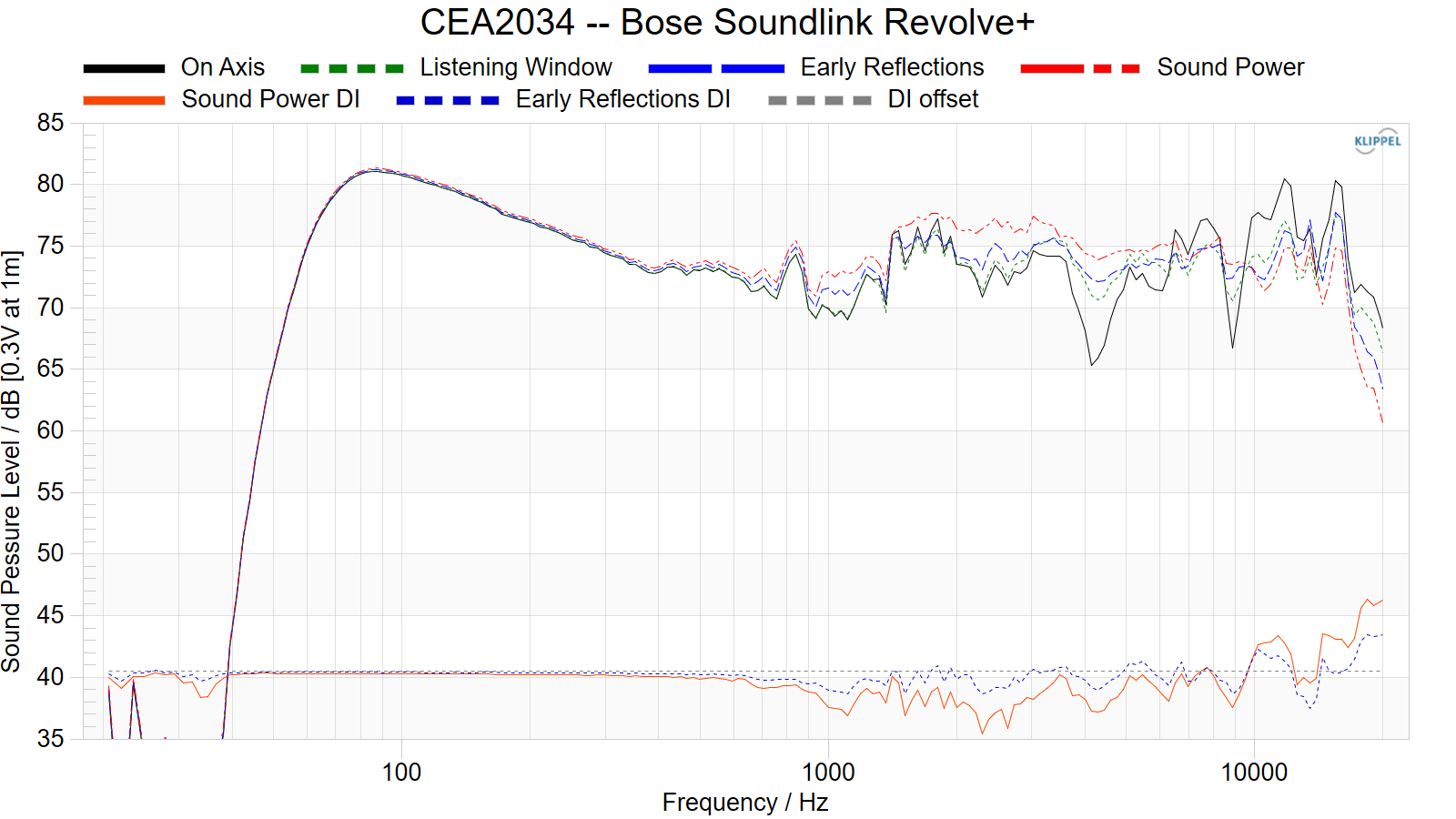
Estimated In-Room Response:
In theory, with complete 360-degree anechoic data on a loudspeaker and sufficient acoustical and geometrical data on the listening room and its layout it would be possible to estimate with good precision what would be measured by an omnidirectional microphone located in the listening area of that room. By making some simplifying assumptions about the listening space, the data set described above permits a usefully accurate preview of how a given loudspeaker might perform in a typical domestic listening room. Obviously, there are no guarantees because individual rooms can be acoustically aberrant. Sometimes rooms are excessively reflective (“live”) as happens in certain hot, humid climates, with certain styles of interior décor and in under-furnished rooms. Sometimes rooms are excessively “dead” as in other styles of décor and in some custom home theaters where acoustical treatment has been used excessively. This form of post processing is offered only as an estimate of what might happen in a domestic living space with carpet on the floor and a “normal” amount of seating, drapes, and cabinetry.
For these limited circumstances it has been found that a usefully accurate Predicted In-Room (PIR) amplitude response, also known as a “room curve” is obtained by a weighted average consisting of 12 % listening window, 44 % early reflections and 44 % sound power. At very high frequencies errors can creep in because of excessive absorption, microphone directivity, and room geometry. These discrepancies are not considered to be of great importance.


Horizontal Contour Plot (not normalized):
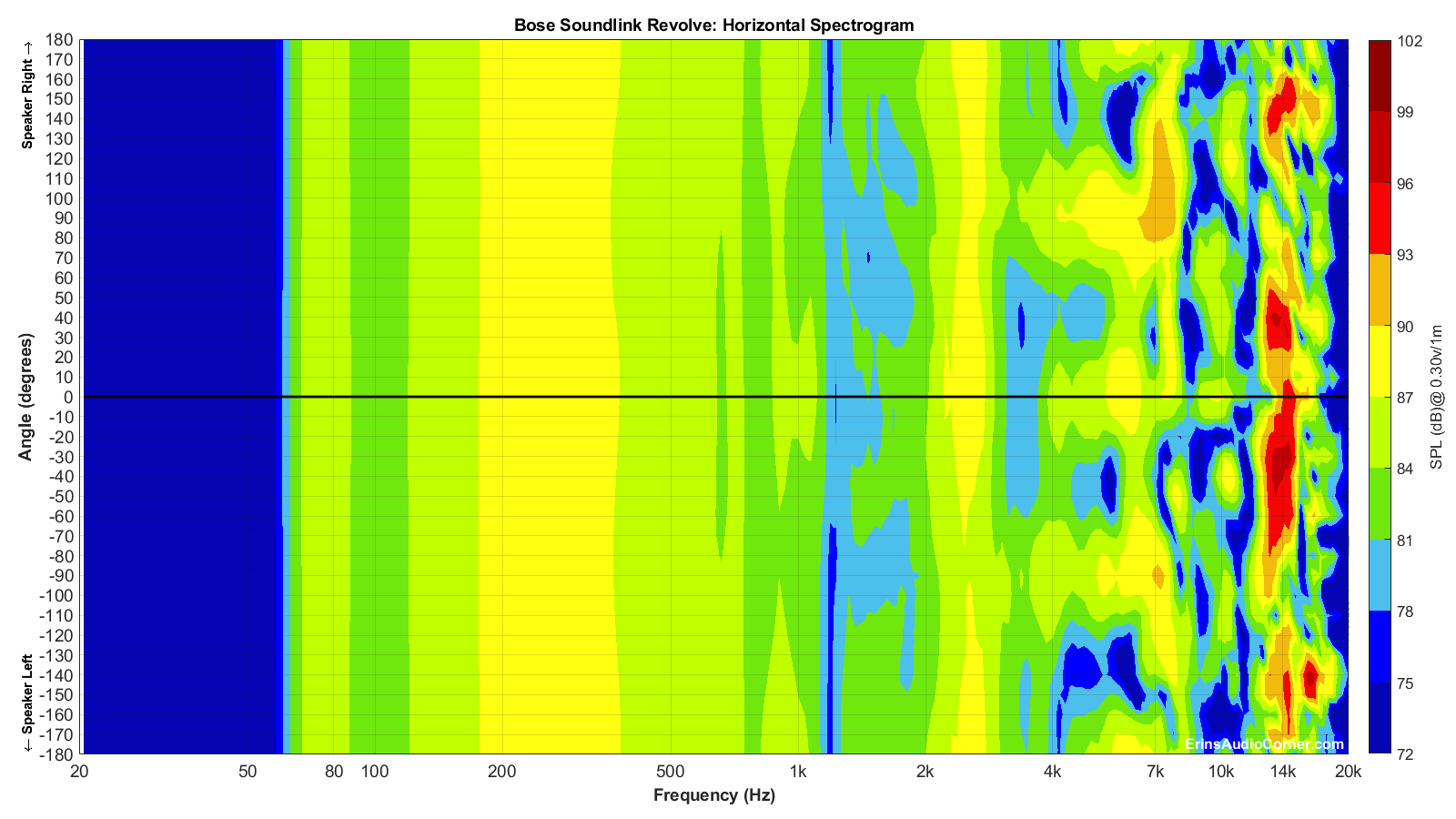
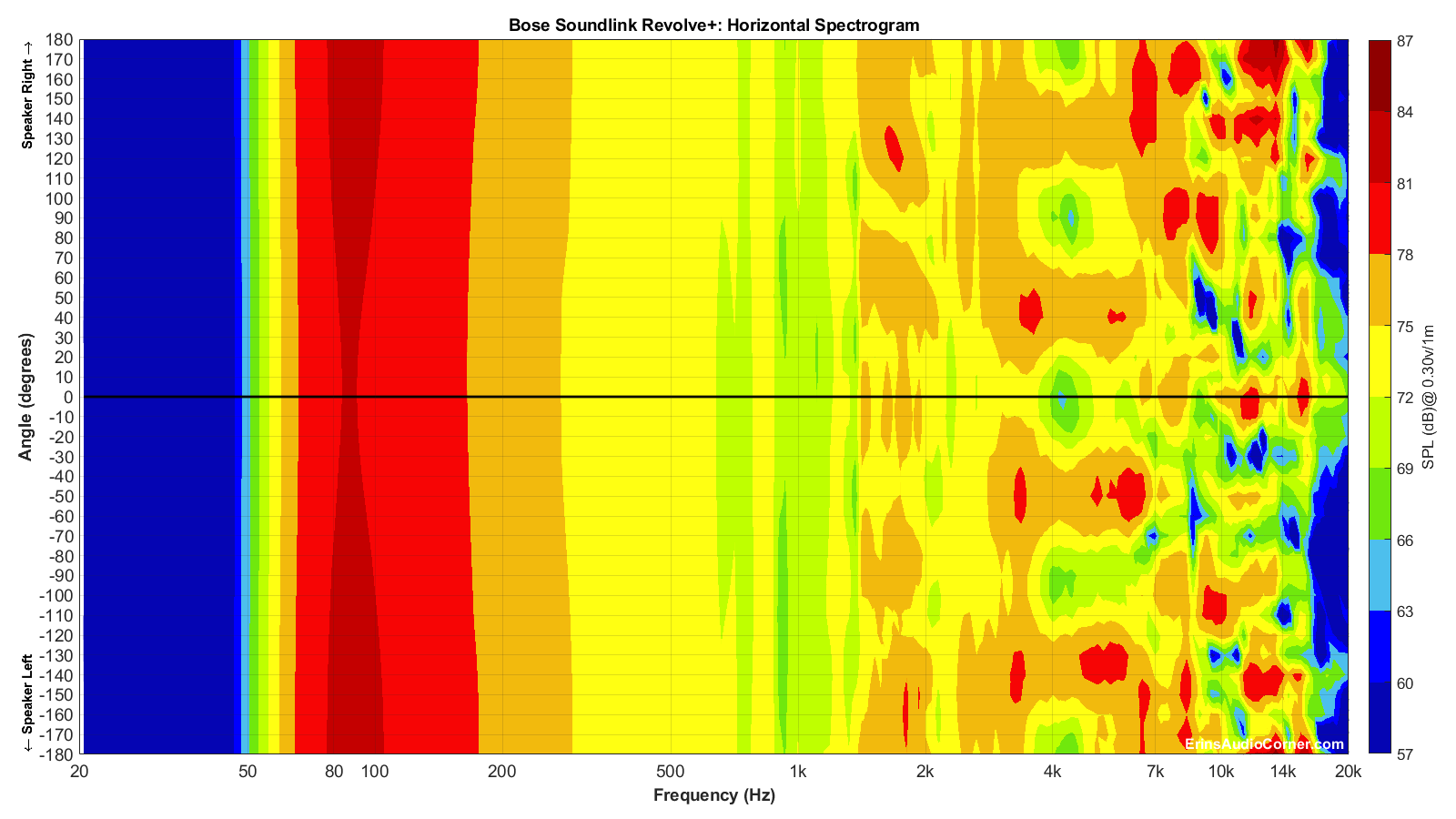
Vertical Contour Plot (not normalized):
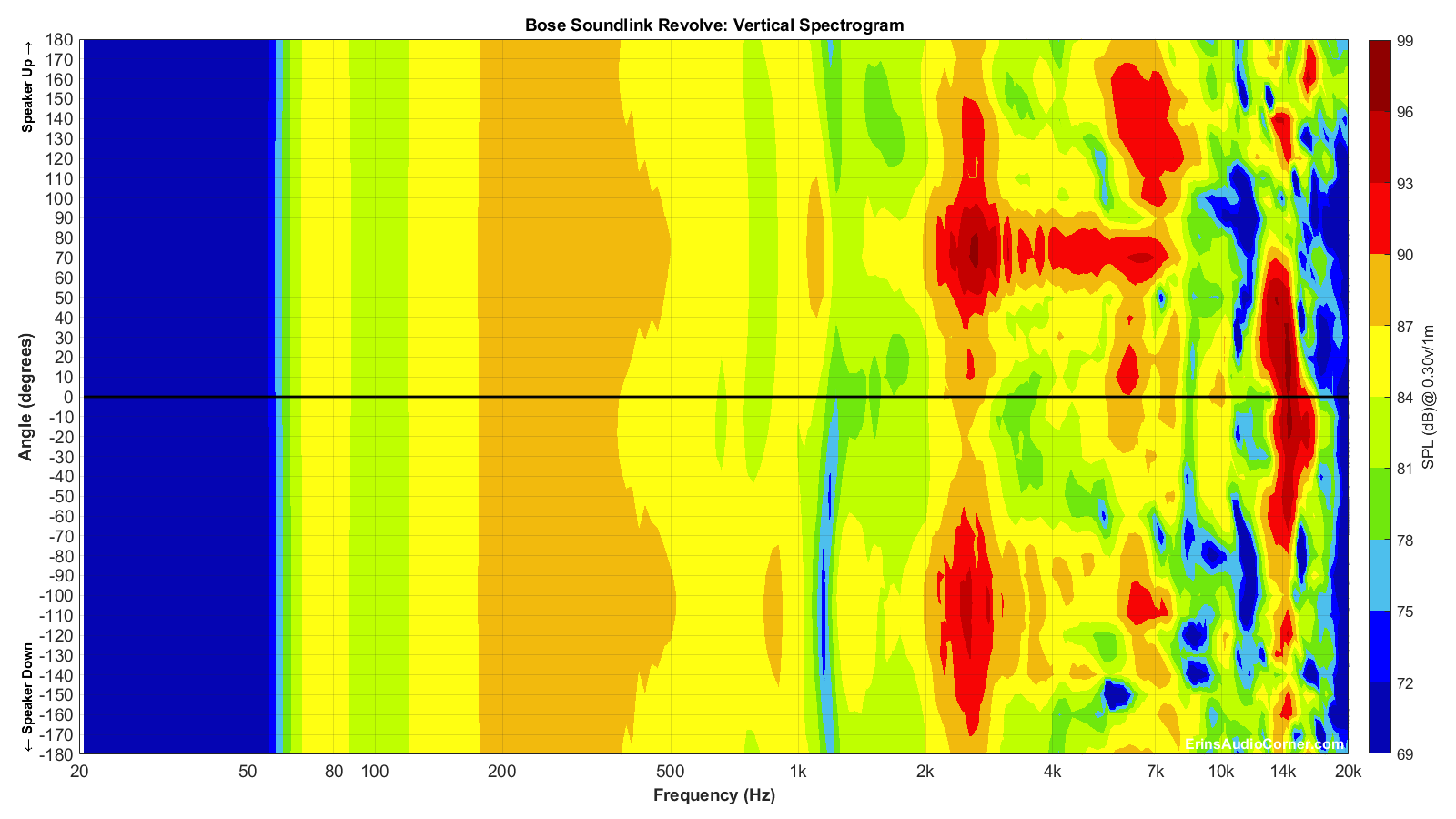
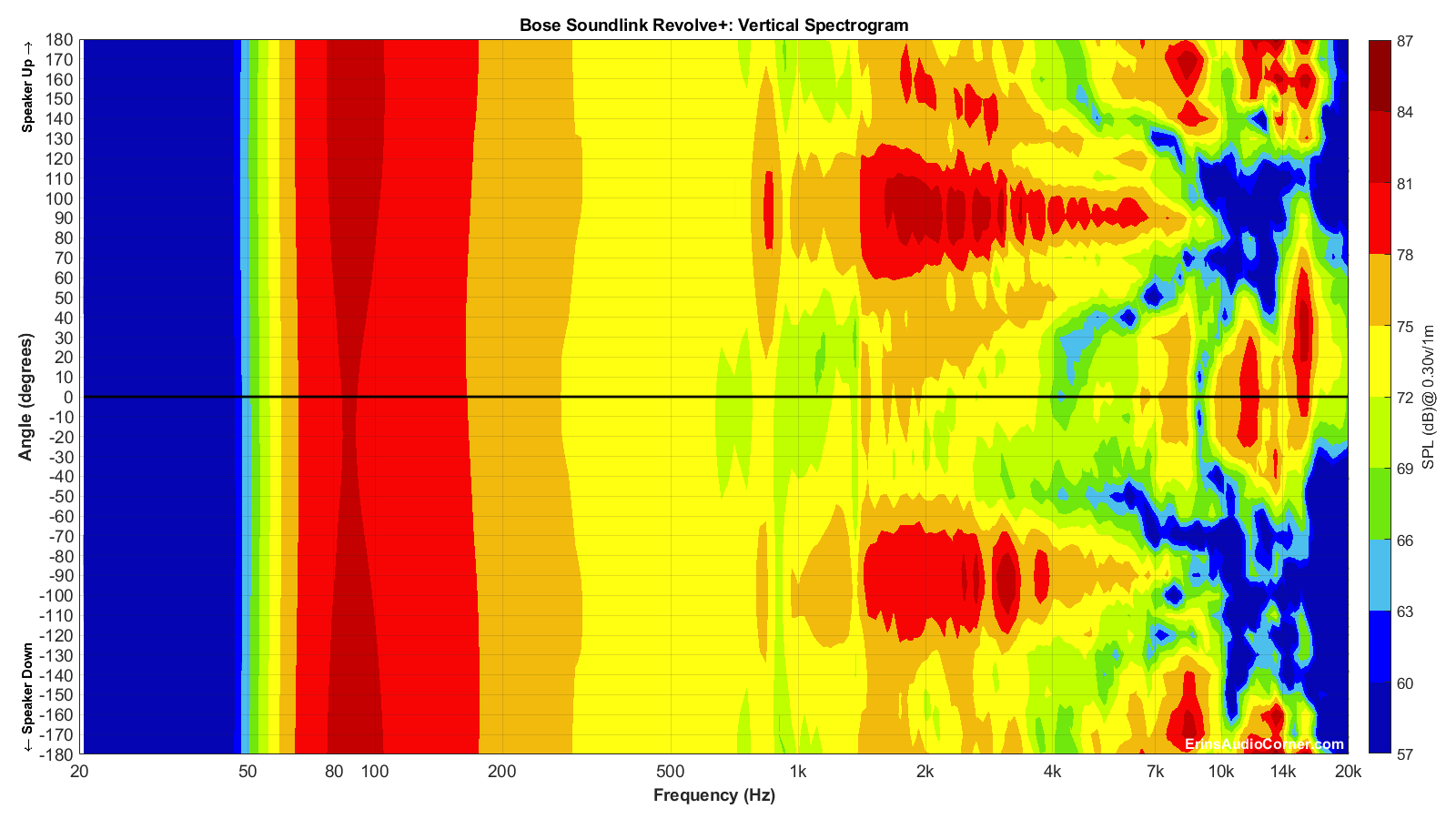
Additional Measurements
“Globe” Plots
These plots are generated from exporting the Klippel data to text files. I then process that data with my own MATLAB script to provide what you see. These are not part of any software packages and are unique to my tests.
Horizontal Polar (Globe) Plot:
This represents the sound field at 2 meters - above 200Hz - per the legend in the upper left.
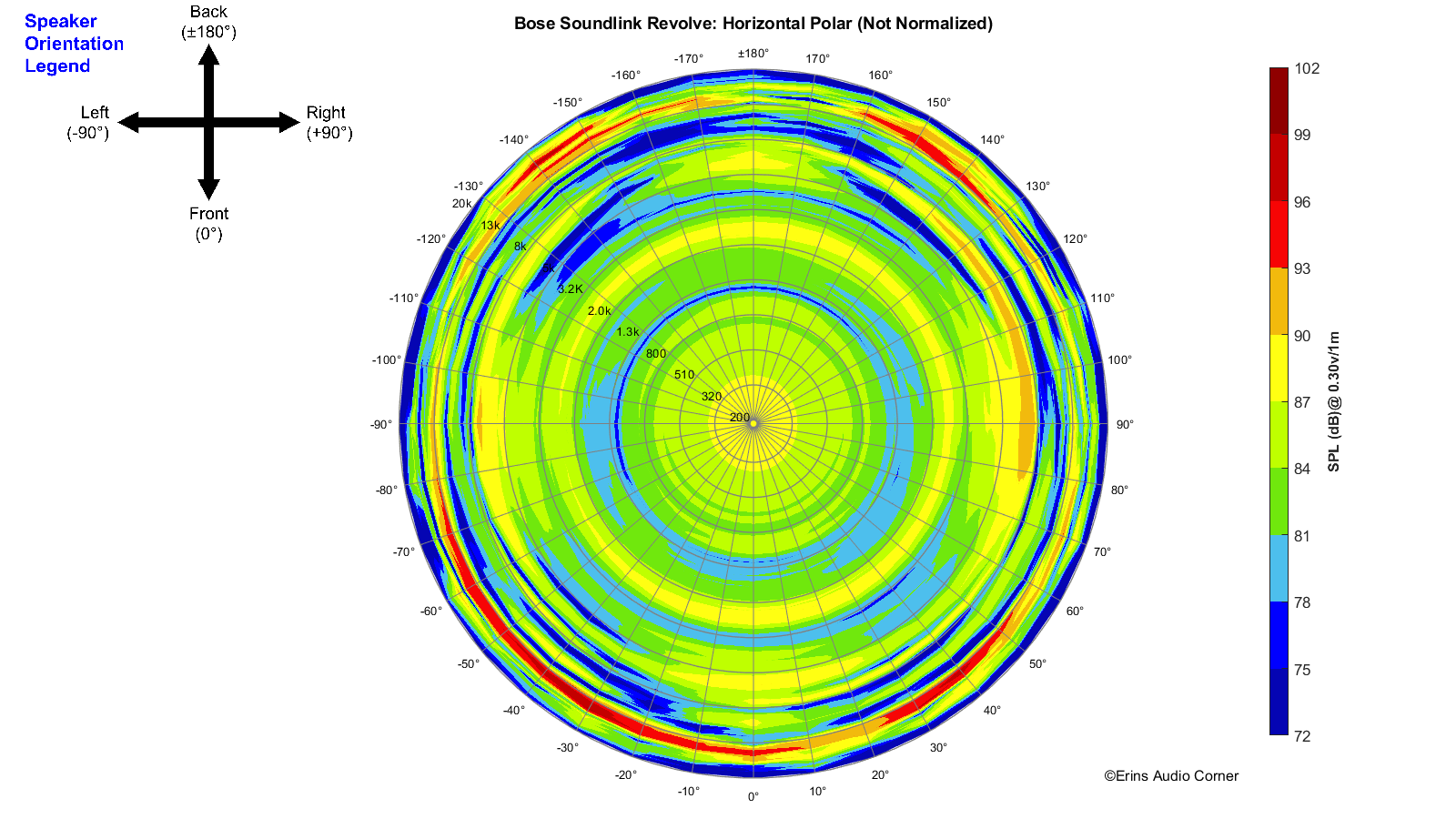
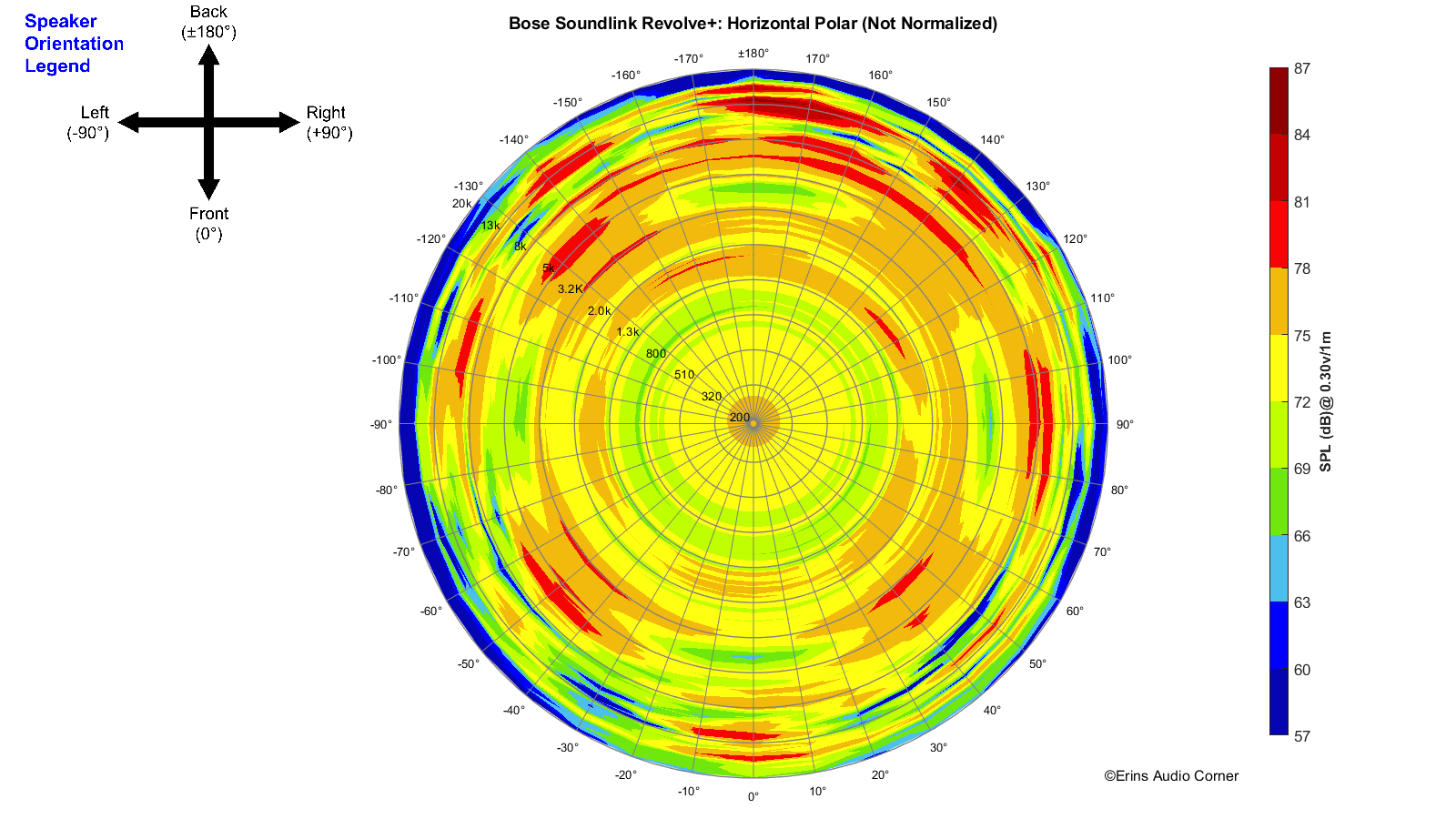
Vertical Polar (Globe) Plot:
This represents the sound field at 2 meters - above 200Hz - per the legend in the upper left.
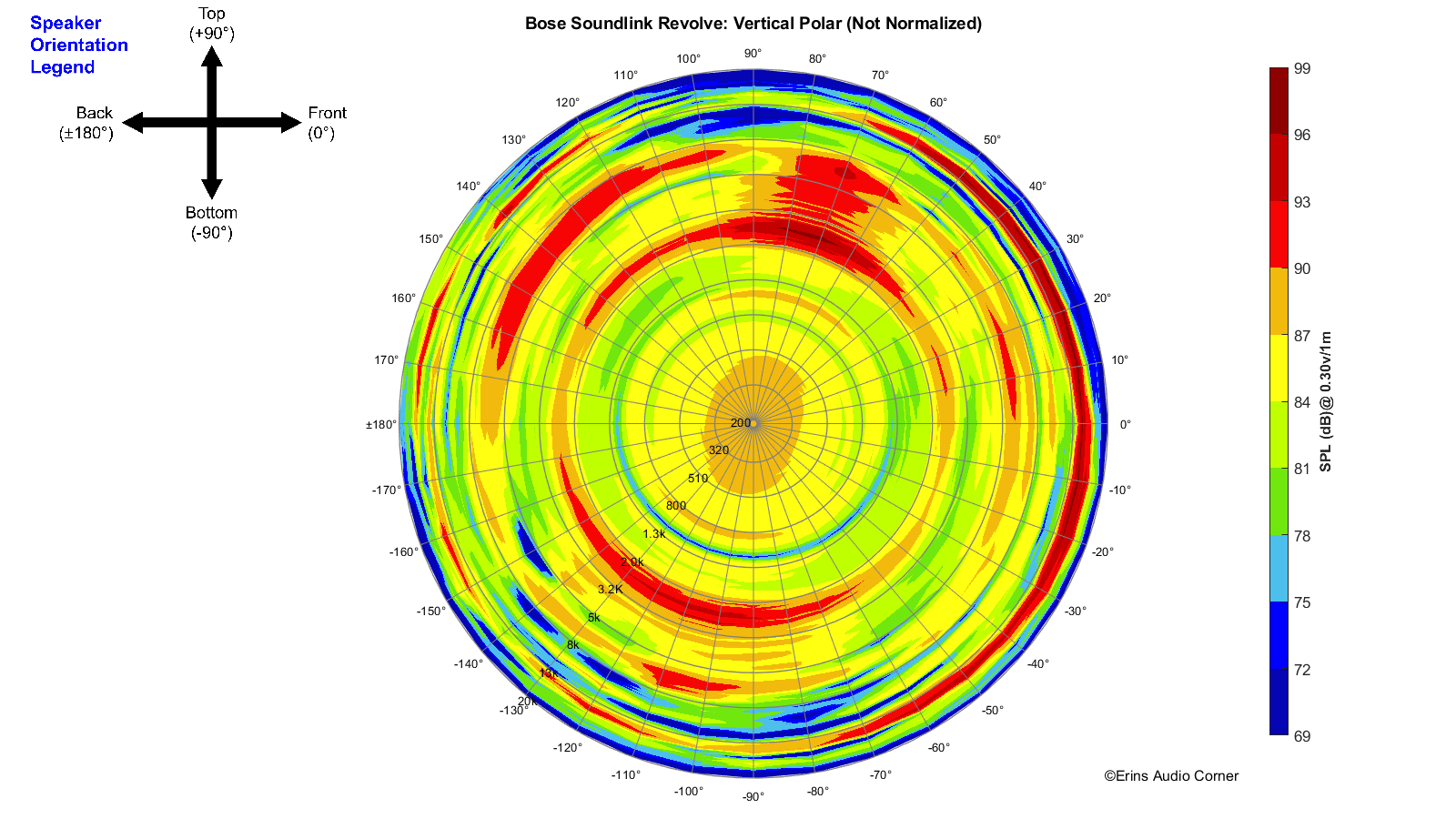
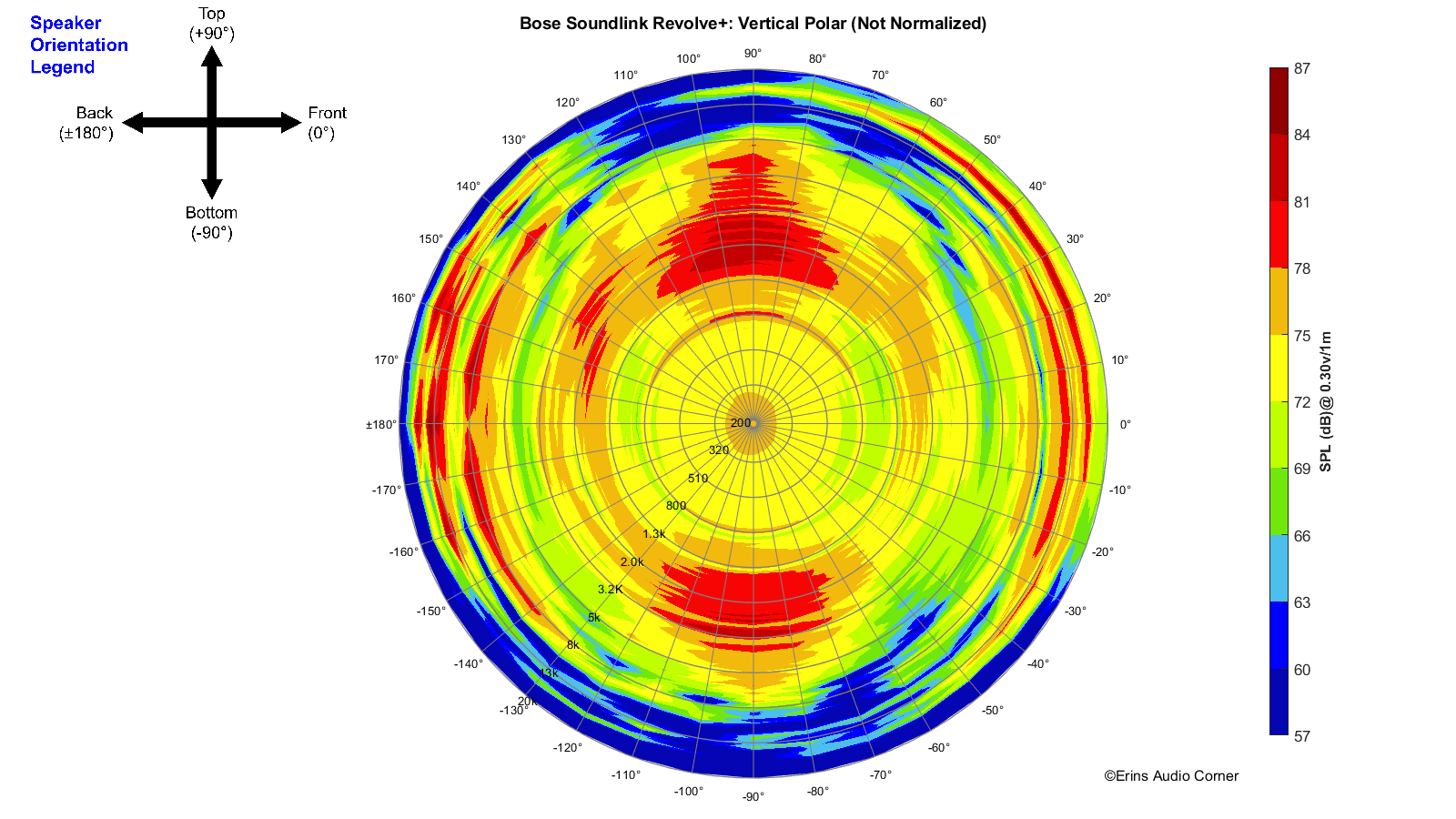
Harmonic Distortion
Harmonic Distortion at max volume (84dB @ 1m). This was literally the loudest I could set the SoundLink Revolve to play:
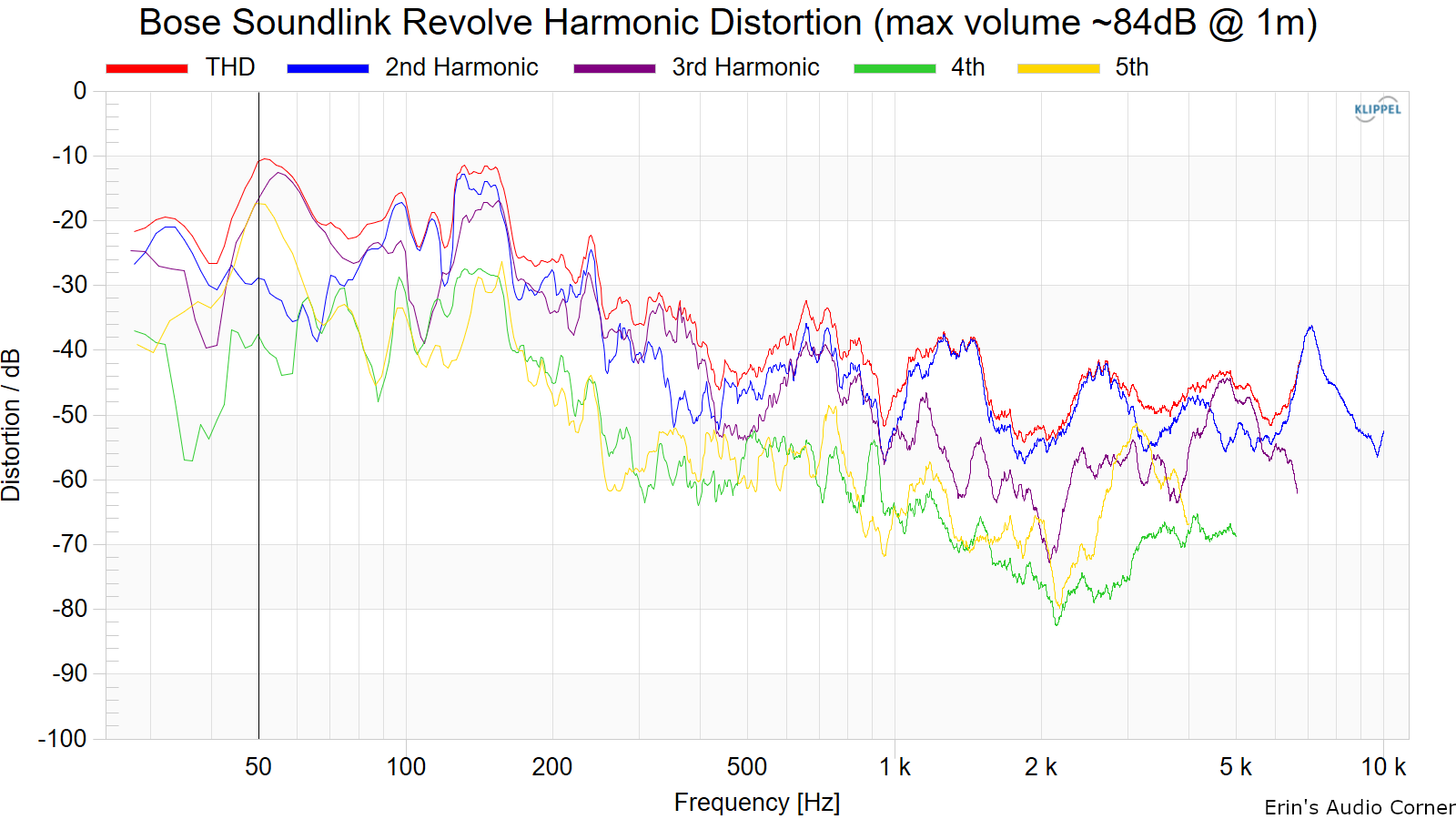
Harmonic Distortion at max volume (88dB @ 1m). This was literally the loudest I could set the SoundLink Revolve+ to play:
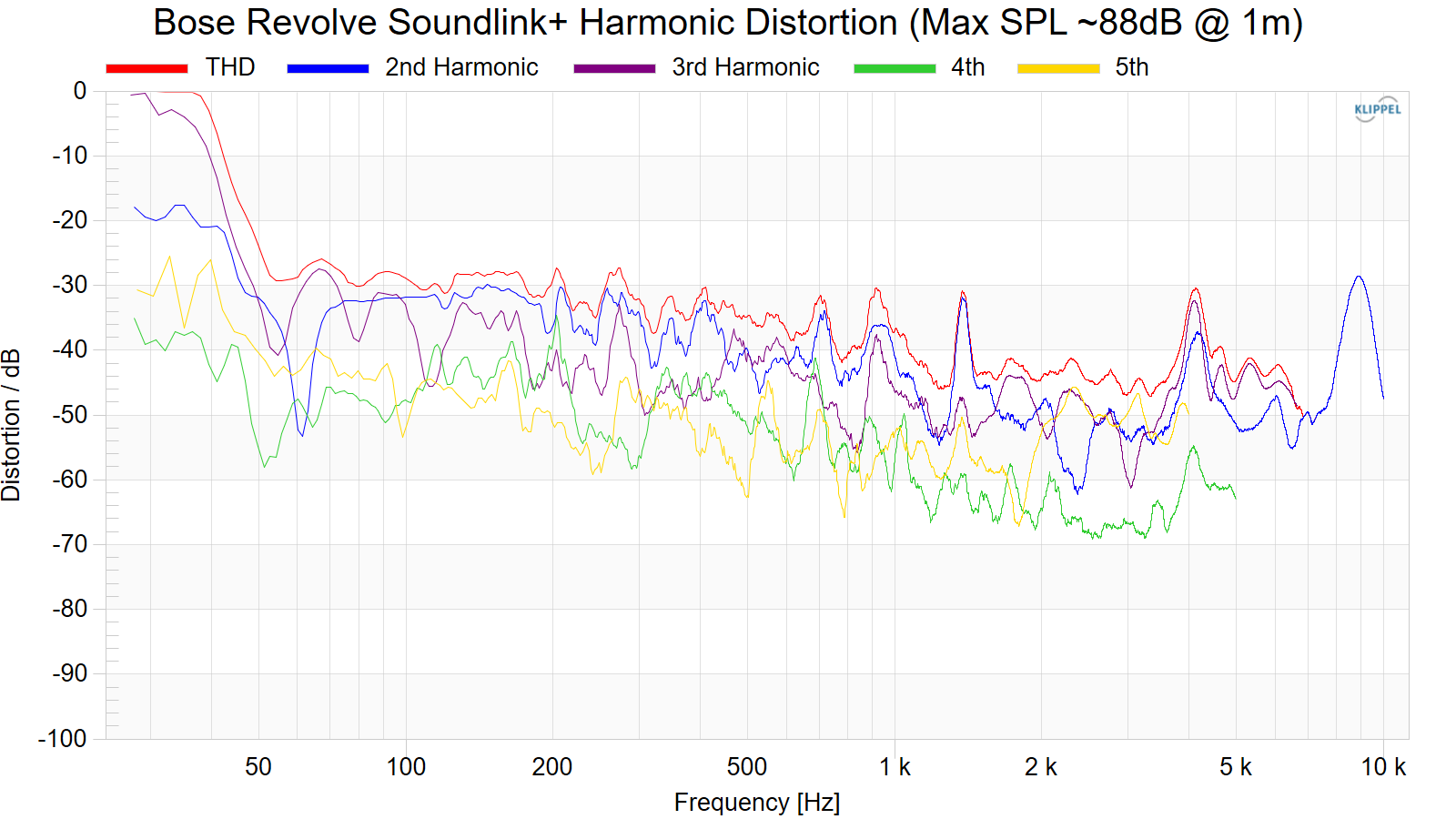
Dynamic Range (Instantaneous Compression Test)
The below graphic indicates just how much SPL is lost (compression) or gained (enhancement; usually due to distortion) when the speaker is played at higher output volumes instantly via a 2.7 second logarithmic sine sweep referenced to 76dB at 1 meter. The signals are played consecutively without any additional stimulus applied. Then normalized against the 76dB result.
The tests are conducted in this fashion:
- 76dB at 1 meter (baseline; black)
- 86dB at 1 meter (red)
- 96dB at 1 meter (blue)
- 102dB at 1 meter (purple)
The purpose of this test is to illustrate how much (if at all) the output changes as a speaker’s components temperature increases (i.e., voice coils, crossover components) instantaneously.
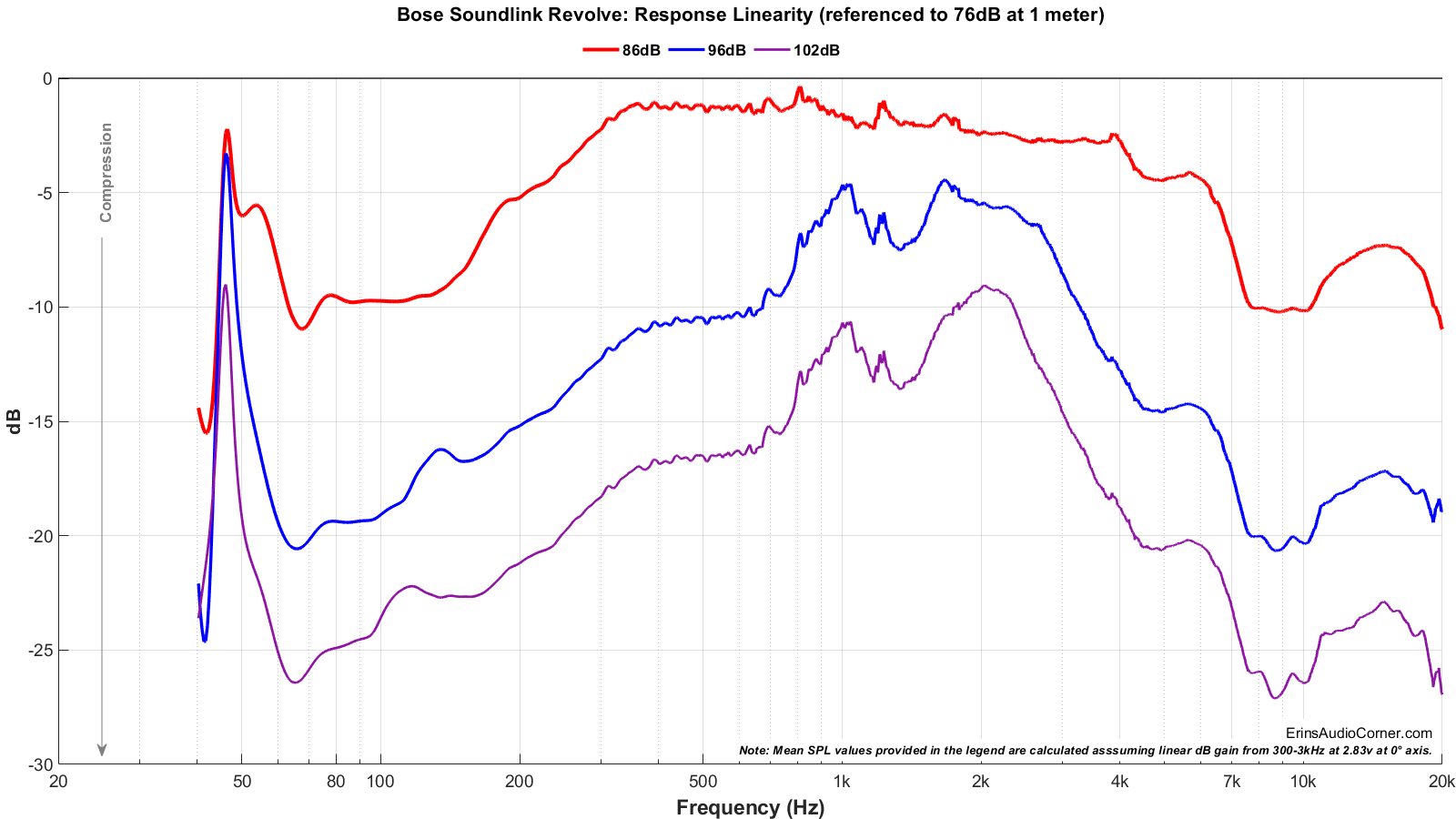
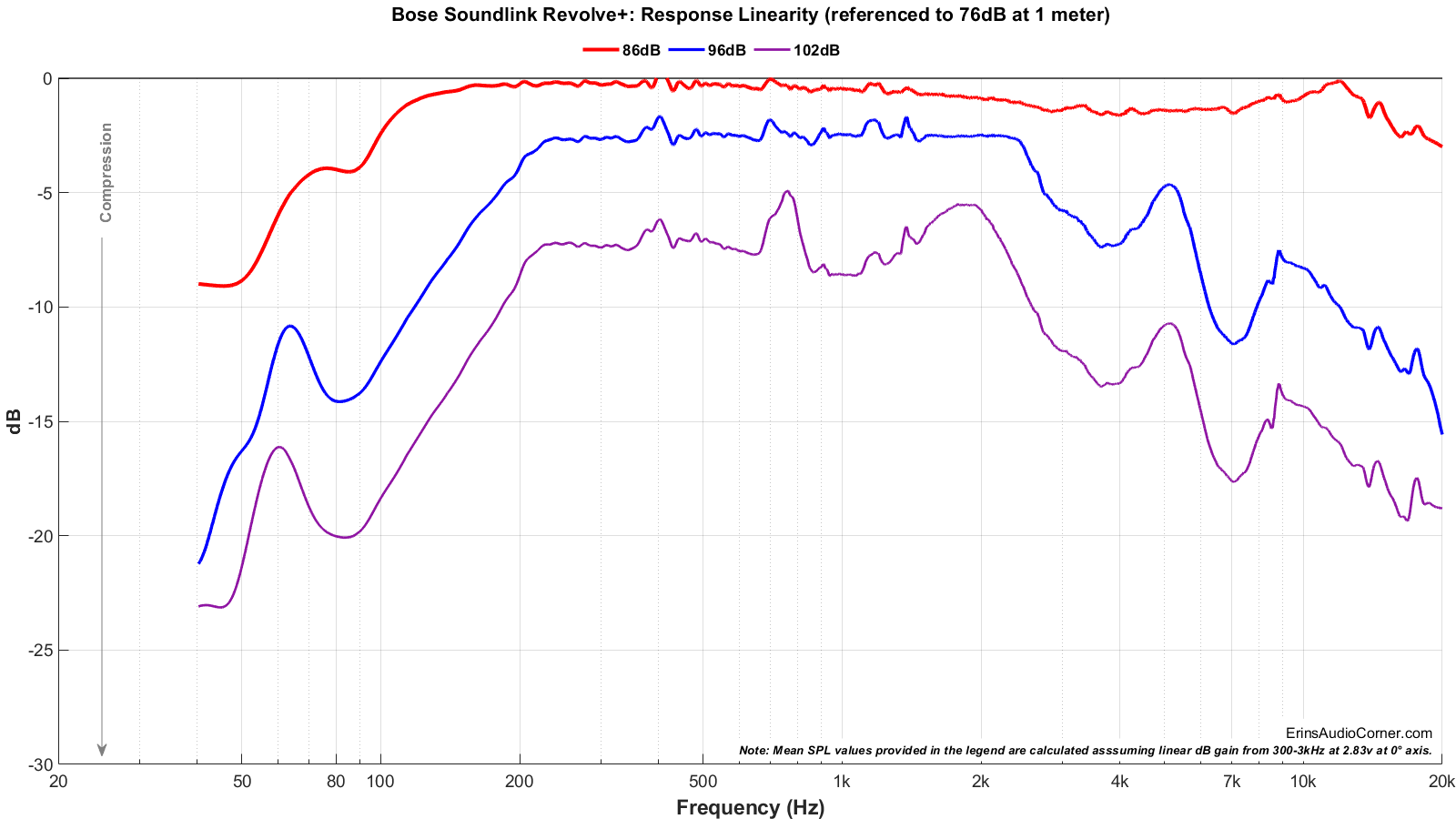
You can clearly see a built-in limiter is used to keep from overpowering and blowing the speaker. However, the Revolve+ is capable of higher output.
Parting Thoughts
- Max SPL is 84dB @ 1m (SoundLink Revolve) and 88dB @ 1m (SoundLink Revolve+).
- Both speakers implement limiting to keep from blowing the speaker.
- The response of the Revolve+ is clearly boosted on the low end. Even when switching back and forth with music shows this to be the case even at the same volume. But as volume increases, the limiter kicks in and lowers the bass output on both units.
I find the Revolve+ to be the better speaker overall. It gets louder with suffering (much) distortion. The bass is fuller (a bit too full at low volumes but some may like this). Connection to both units is quick and extremely easy. Easier than using the Apple HomePod Mini. For the extra $70 or so, I’d get the Revolve+.
However, at lower levels where the bass does not need to be limited, I prefer the sound of the Apple HomePod Mini. It doesn’t have the low end response the Revolve+ does but it does generally sound more neutral (as neutral as a speaker like this can be).
Support the Cause
If you like what you see here and want to help support the cause you might be interested in joining my Patreon, here. You can also contribute via PayPal (the big yellow button below).
Your support helps me pay for new items to test, hardware, miscellaneous items and costs of the site’s server space and bandwidth. All of which I otherwise pay out of pocket. So, if you can help chip in a few bucks, know that it is very much appreciated.
Alternatively, if you plan on purchasing this speaker please consider doing so through my B&H affiliate link below. It helps me earn a small commission at no additional cost to you.
You can also join my Facebook and YouTube pages if you would like to follow along with updates.